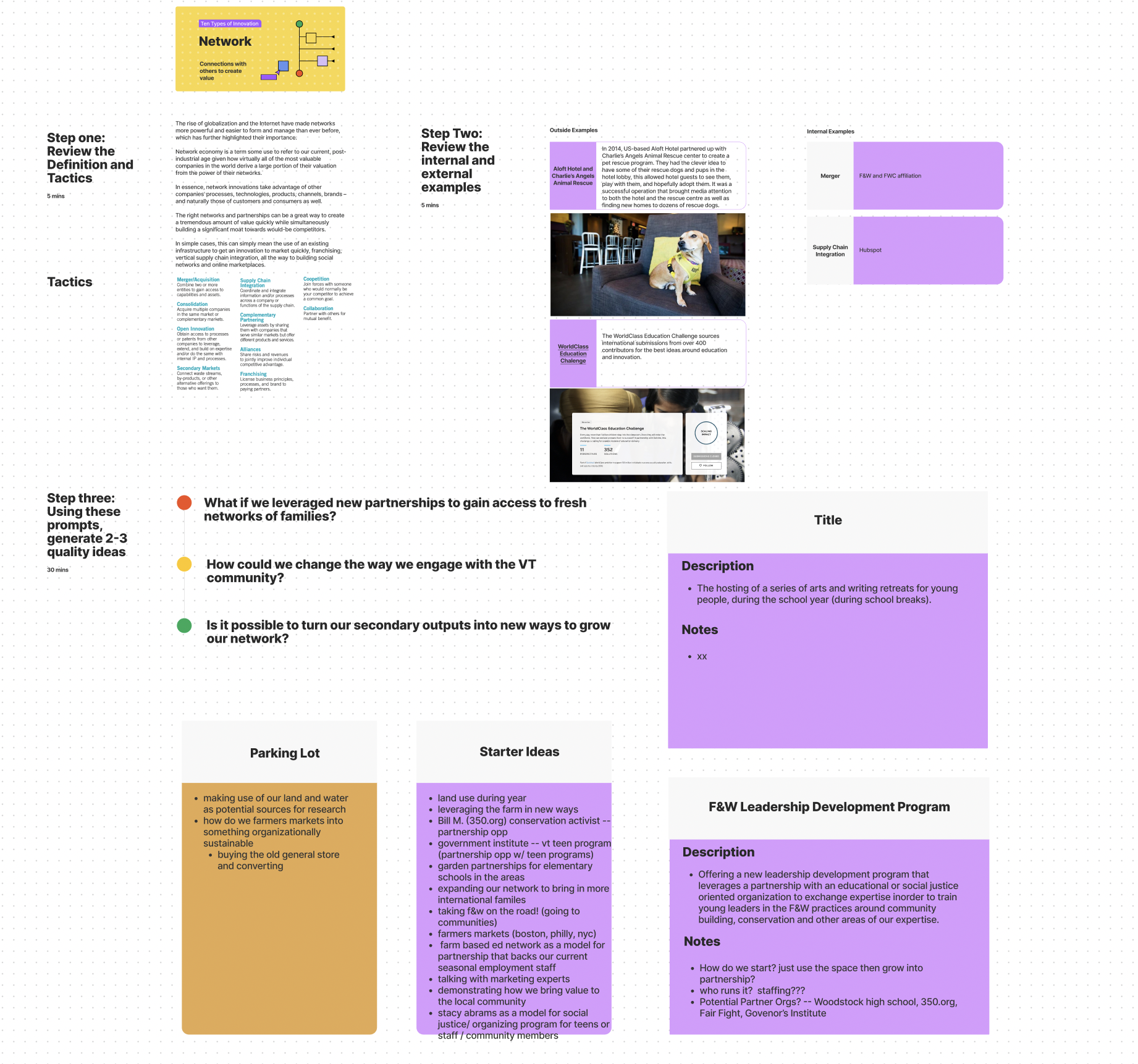Crafting an Organizational Strategy for Good
Farm and Wilderness Foundation
Farm and Wilderness Foundation, Plymouth Vermont
The Opportunity
Farming Wilderness, an organization comprising summer camps and conservation efforts, found itself facing substantial changes in the wake of the pandemic. With a redefined mission and values, they recognized the need for a fresh future-facing. The challenge was to navigate them through a design-led strategic planning process that not only prioritized human-centered design principles but also cultivated their internal capacity for continuous strategic thinking and planning.
The Approach
Our Approach for the strategic planning process.
The journey began with a discovery phase, involving a series of facilitated sessions with organization's board to discuss their hopes, fears, and ideas about how to address them. Combining these insights with an internal audit of the organization’s current capacity to deliver their core offering, we identified opportunities and pain points explore in their new strategy.
Then, we used external research to explore market trends and related factors to defining seven key areas to focus their strategic planning efforts.
A preview of our design-led planning approaches can be seen below.
We ran ideation session with board members using the 10 Types of Innovation framework to source new ideas for how the organization might grow.
The synthesis of our ideation session and competitive analysis sourced 7 Opportunity Areas for Farm and Wilderness’s strategic plan to address.
Collaborative working sessions using tools like Figjam allowed us to engage every staff person and board member in crafting the plan.
“Growing for Good” is the title they selected for the plan making easy to socialize with their internal team, families they serve, community members and donors.
We uncovered three core guiding principles for addressing their key areas: running a solid organization, nurturing their campers and staff personal development, and becoming a net positive gain to their surrounding community. These pillars guided the plan, emphasizing strong internal systems, holistic personal development, and community engagement.
Once the board approved the plan, we focused on implementation of the plan. Key activities were outlined to align with the plan's goals – forming a 3 year operational plan. We then worked with their finance department to develop a fiscal model that analyzed historical revenue and expenses to inform resource allocation for the new opportunities outlined in the plan. Together, these tools helped evaluate existing work and allocate resources effectively.
The Outcome
Through a design-led strategic planning process, Farming Wilderness created a forward-looking roadmap for success. They developed internal capabilities to sustain design-led strategies and embraced ongoing strategic thinking. By aligning their operations and exploring new opportunities, they effectively navigated an ever-changing landscape, fulfilling their mission of growth for the greater good.







